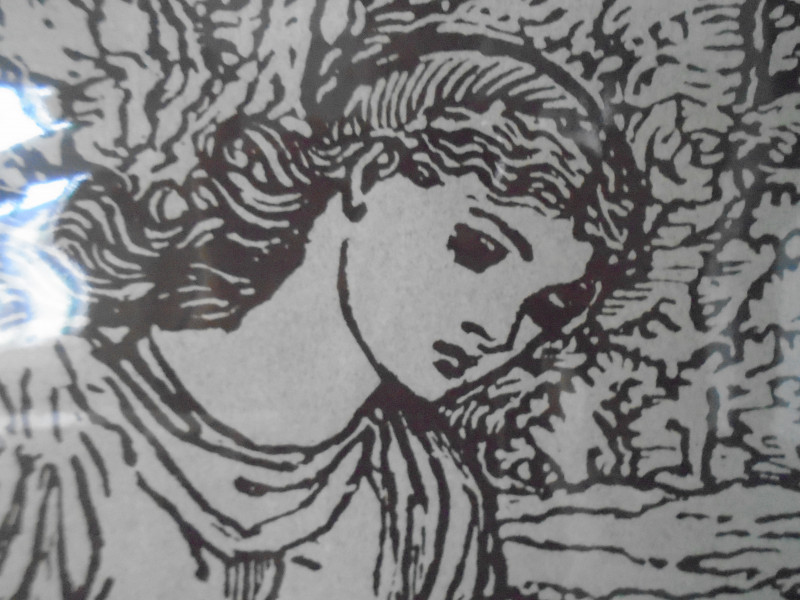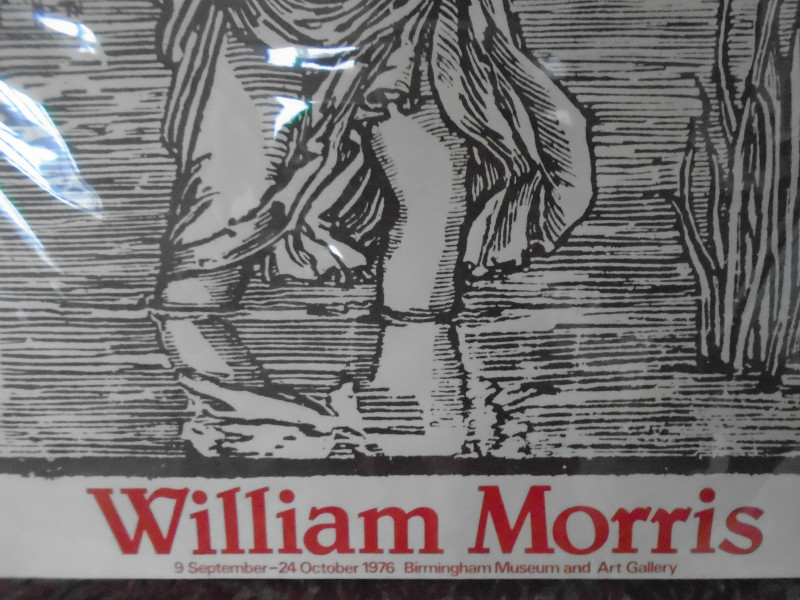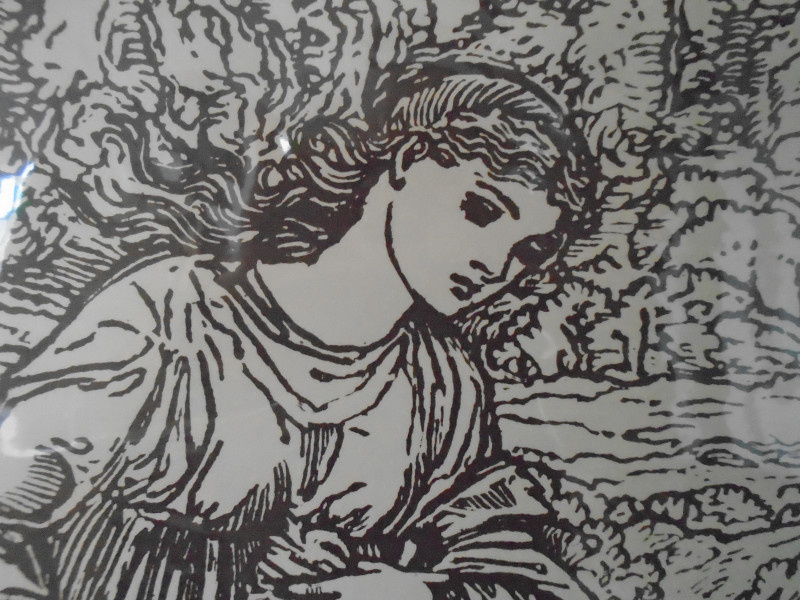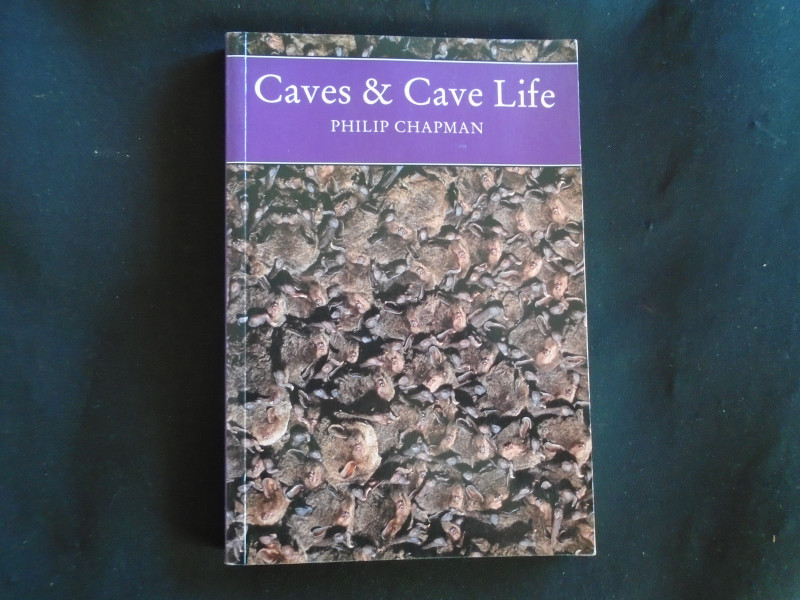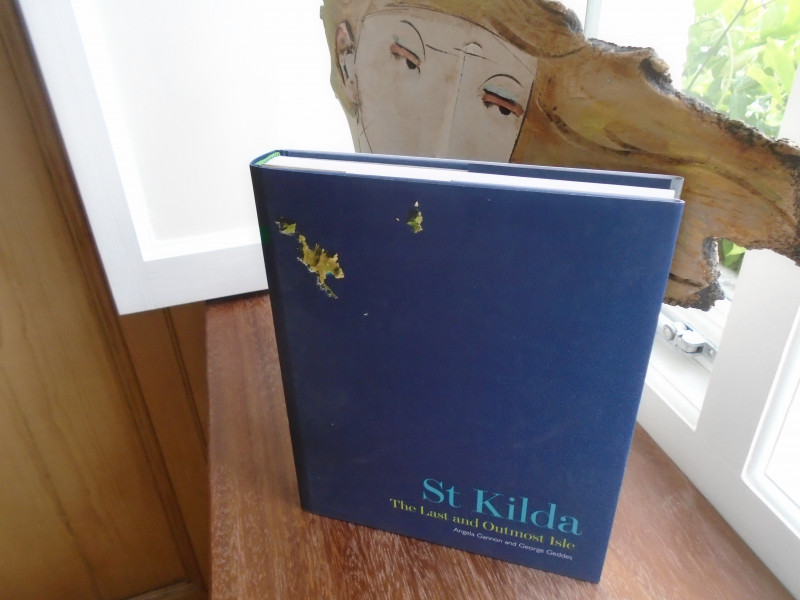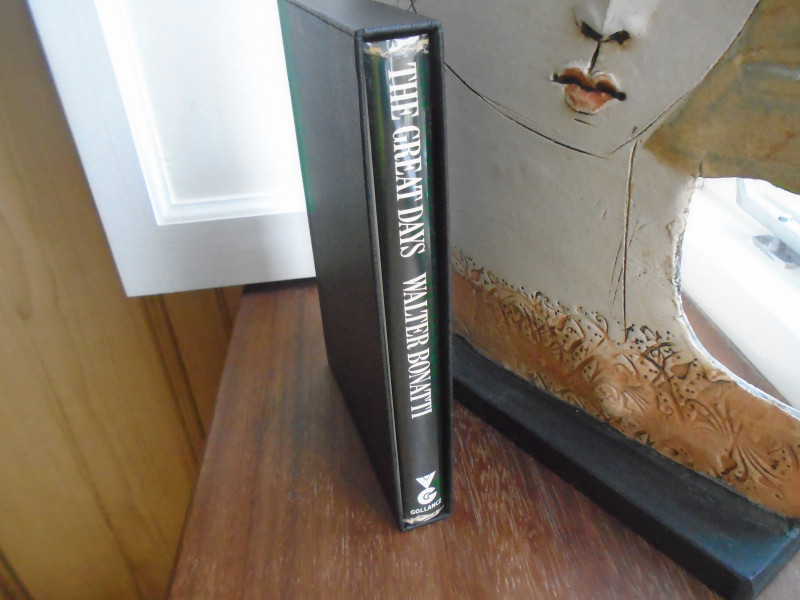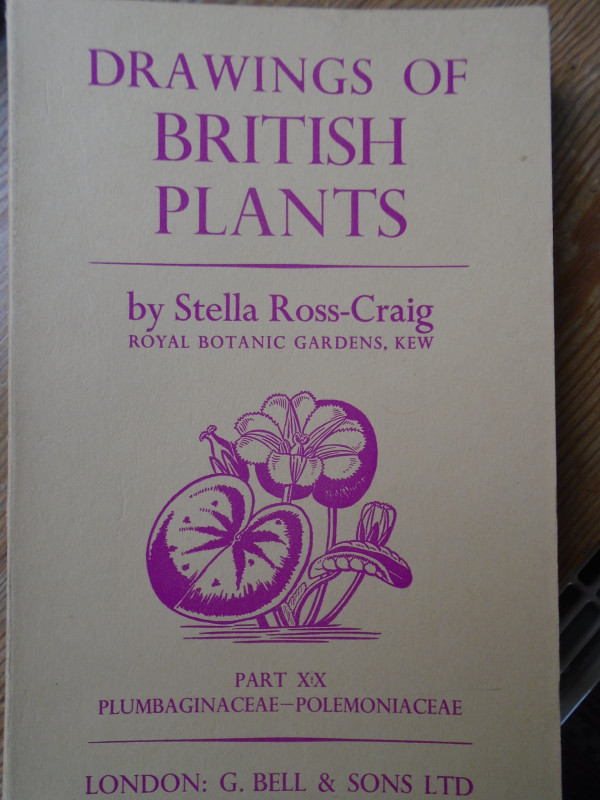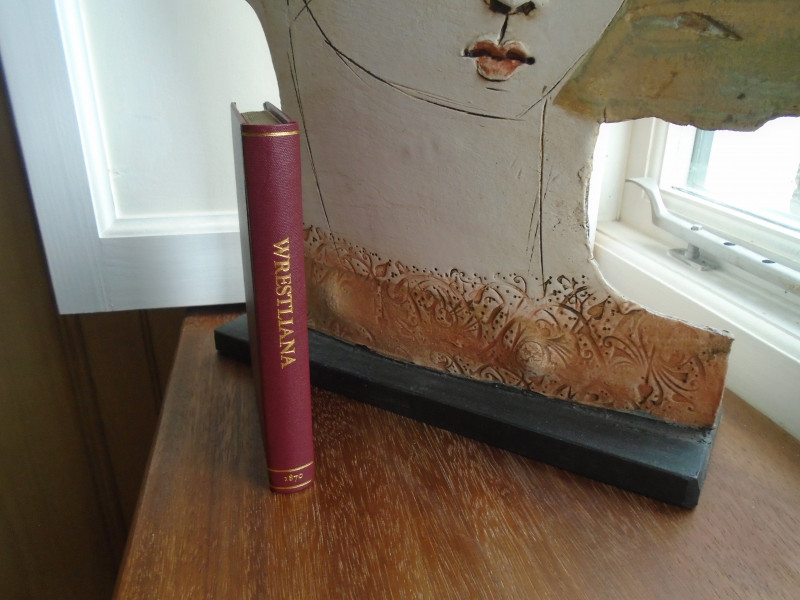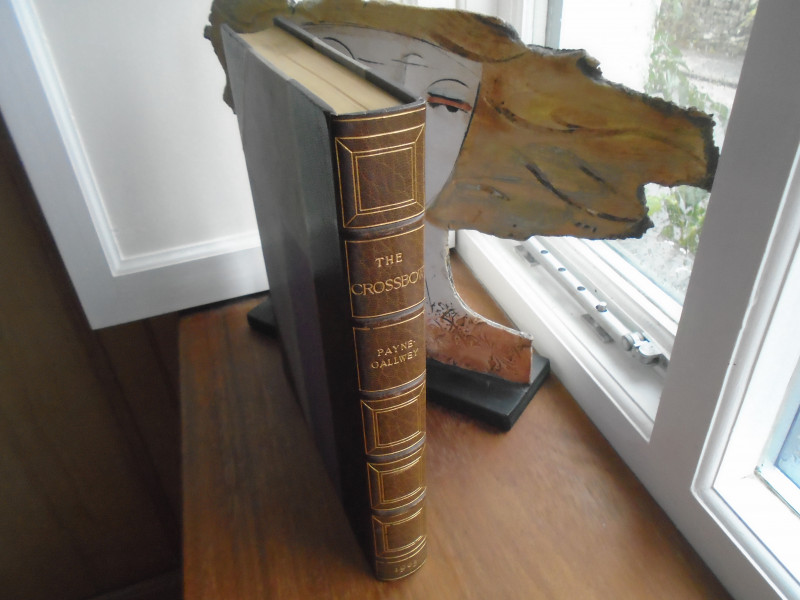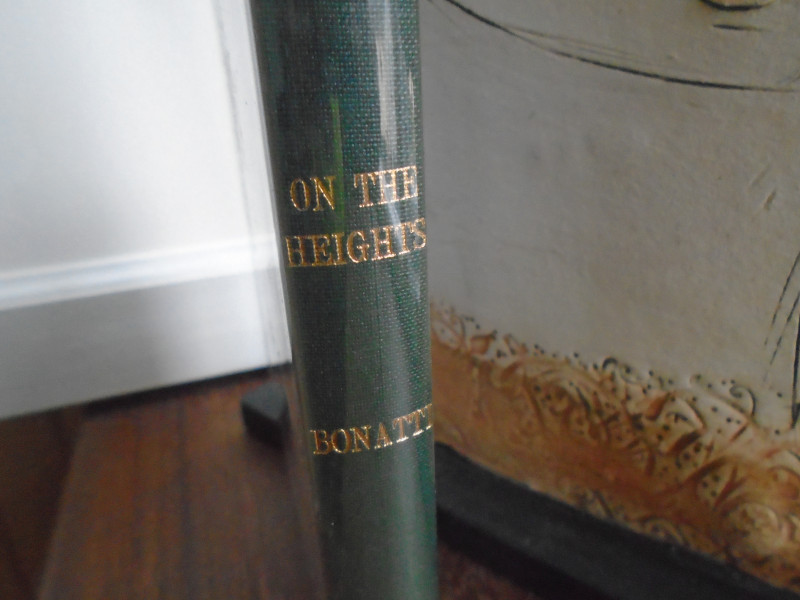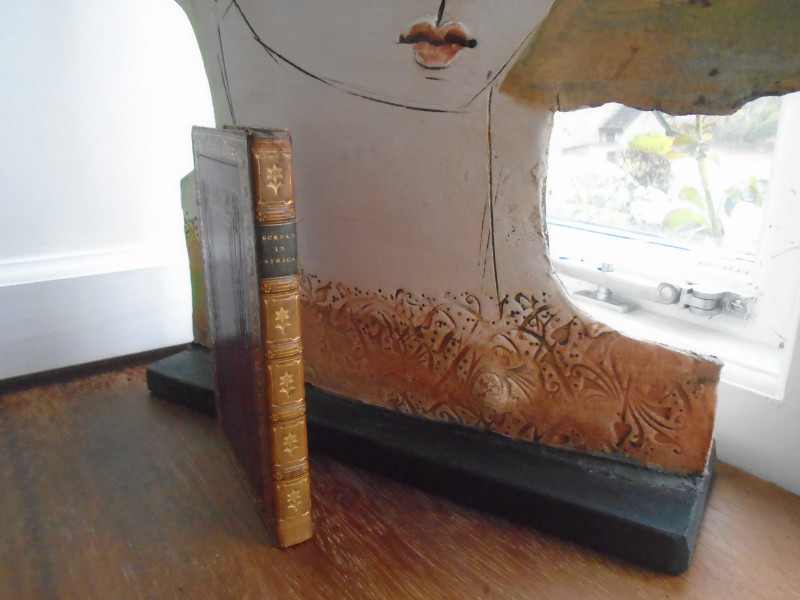William Morris Print
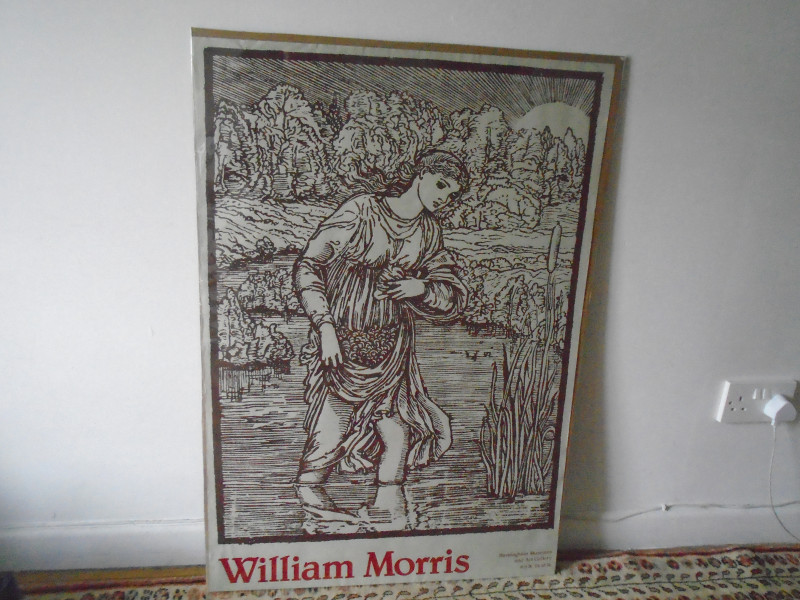





Book Description
William Morris Exhibition print: Birmingham Museum Art Gallery 1981 66cm. x 93cm.
William Morris (1834 – 1896) was an English textile designer, poet, artist, writer, and socialist activist associated with the British Arts and Crafts movement. He was a major contributor to the revival of traditional British textile arts and methods of production. His literary contributions helped to establish the modern fantasy genre, while he helped win acceptance of socialism in fin de siècle Great Britain.
Morris began an apprenticeship with the Oxford-based Neo-Gothic architect George Edmund Street in January 1856. His apprenticeship focused on architectural drawing, and there he was placed under the supervision of the young architect Philip Webb, who became a close friend. Morris soon relocated to Street's London office, in August 1856 moving into a flat in Bloomsbury in Central London with Burne-Jones, an area perhaps chosen for its avant-garde associations. Morris was fascinated by London but dismayed at its pollution and rapid expansion into neighbouring countryside, describing it as "the spreading sore".
Morris desired a new home for himself and his daughters resulting in the construction of the Red House in the Kentish hamlet of Upton near Bexleyheath, ten miles from central London. The building's design was a co-operative effort, with Morris focusing on the interiors and the exterior being designed by Webb, for whom the House represented his first commission as an independent architect. Named after the red bricks and red tiles from which it was constructed, Red House rejected architectural norms by being L-shaped. Influenced by various forms of contemporary Neo-Gothic architecture, the House was nevertheless unique,] with Morris describing it as "very mediaeval in spirit". Situated within an orchard, the house and garden were intricately linked in their design.It took a year to construct, and cost Morris £4000 at a time when his fortune was greatly reduced by a dramatic fall in the price of his shares. Burne-Jones described it as "the beautifullest place on Earth.
In January 1891, Morris founded the Kelmscott Press, a private press which would go on to publish the celebrated Kelmscott Chaucer.
Morris's biographer E. P. Thompson described him as having a "robust bearing, and a slight roll in his walk", alongside a "rough beard" and "disordered hair". The author Henry James described Morris as "short, burly, corpulent, very careless and unfinished in his dress ...
Morris's first biographer Mackail described him as being both "a typical Englishman" and "a typical Londoner of the middle class".
Attractive large and rare decorative poster.
Author
William Morris
Date
1981
Binding
soft
Publisher
Birmingham Museum and Art Gallery
Condition
Fine
Friends of the PBFA
For £10 get free entry to our fairs, updates from the PBFA and more.
Please email info@pbfa.org for more information
